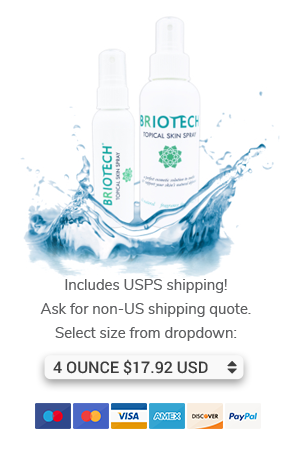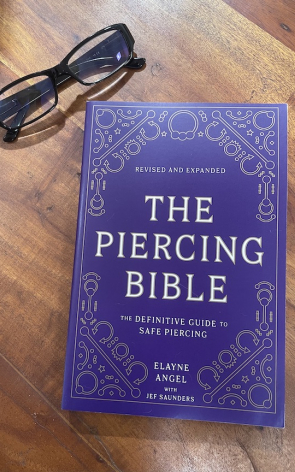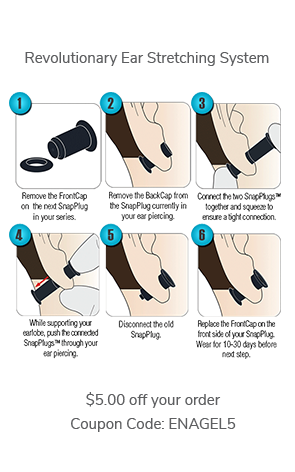I received this question today:
Hi, I have a few questions about the Vertical Hood Piercing. How long is it recommended before having sex or exercising? I have heard that some people aren't able to run or walk upstairs without nearly having an orgasm. How common is this? Also I have heard from someone who had one that when they took it out, there were bumps that formed. Is this something that often happens upon removing the piercing? Thank you very much. Akilah
Hi Akilah, Thanks for your email. Whether you think of it as fortunate or unfortunate, most women do not have any problems climbing stairs or exercising as a result of enjoying their piercings "too much." There is often a period of heightened sensitivity or hypersensitivity for a short time after piercing, but this tends to normalize over a short period of time. There is more information about sensation, sensitivity, and related subjects in my book. There is no required period for abstaining from sexual activity or exercise, but there are some very important rules to which you must adhere. This passage is from The Piercing Bible:
Safer Sex There is no set period for abstinence from sexual activities while genital piercings are healing. There are, however, two non-negotiable rules: 1. Be gentle . Pay attention to your body. If your piercing feels sore, you must stop what you’re doing, or at least ease up. As you begin to heal and the piercing feels less tender, you must still be vigilant to avoid injuring the fragile new cells. 2. Be clean and hygienic. Protective barriers must be used to prevent the sharing of bodily fluids. For oral sexual contact, use a dental dam (sheet of latex) to shield female genitalia, and a flavored or unlubricated condom during fellatio. Thoroughly wash hands and sex toys before contact near a healing piercing, and use condoms for all intercourse and on insertables like dildos and bullet-type vibrators. If other barriers aren’t suitable, apply a waterproof dressing such as a Nexcare or Tegaderm before sexual activities to keep your partner’s body fluids from getting on your piercing. All of these precautions are mandatory to prevent infection during the entire initial healing period, even if you and your partner are monogamous and healthy. Appropriate body jewelry is smooth, so high-quality condoms that fit properly should perform well. Water-based lubricant helps reduce excess friction to protect the integrity of the latex. The sensitivity of your healing piercing can make up for the addition of an unfamiliar barrier. Pleasure Plus condoms are made with extra room that is suited to frenum and Prince Albert jewelry. Avoid condoms and lubricants with the spermicide nonoxynol-9 (N-9), as this harsh chemical may burn or sting and can harm the delicate cells of a fresh piercing (as well as vaginal or rectal tissue). The bumps you mentioned probably weren't caused by abandoning the piercing--they just became more evident when the jewelry was no longer in place. This passage addresses the tissue changes you asked about. Some amount of scarring or mark is to be expected from a piercing. Scarring and Permanent Physical Changes A piercing has the potential to be a temporary adornment (especially when compared to a tattoo), because the jewelry can easily be removed. There is a risk, however, of irreversible changes to the body, including discoloration, a mark such as a scar, bump, or dimple, or a permanent hole. Many piercings shrink or close quickly, but some piercings will remain open indefinitely without jewelry in them. The placement of the hole, the length of time you have worn the piercing, the thickness of the jewelry that was in it, and your individual tissue all impact whether or not your piercing stays viable after removing the jewelry. Piercings that are stretched to large dimensions commonly leave significant voids that may be considered disfiguring; to correct them, plastic surgery is required. Stretching a piercing too quickly or attempting to expand unsuitably thin tissue leads to problems. There are piercings that have a tendency to effect changes such as the hardening or thickening of the tissue surrounding the openings, and this can be irreversible. For example, nipple piercings are known for causing permanent enlargement, especially in underdeveloped (small) anatomy. Specifics are covered in the discussion of each common piercing. Scarring and tissue discoloration at the piercing site are relatively normal occurrences, especially if you have a history of darkened scars. This can happen even when a piercing is performed properly and heals uneventfully. Excessive scarring sometimes occurs in reaction to piercing, and it can be very difficult to resolve. If you have a history of problems with scarring or keloids (large growths of fibrous tissue), piercing is generally inadvisable. For more on this topic, see “Excessive Scarring,” and the subsequent sections in chapter 16.





